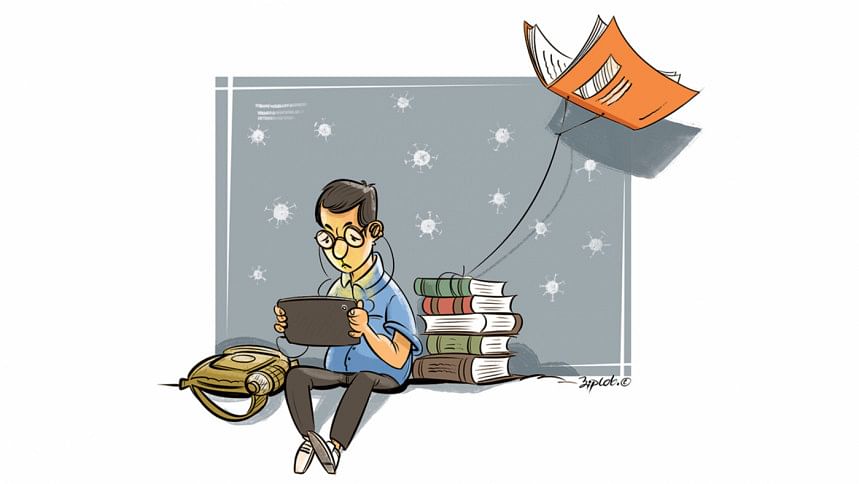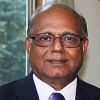Our education in the next 50 years

It has been a season of reviewing and reminiscing about the past 50 years since independence and projecting into the future with expectation and hope. Two prominent think tanks—Bangladesh Institute of Development Studies (BIDS) and the Centre for Policy Dialogue (CPD)—have held multi-session conferences with dozens of papers and speakers on progress and challenges in different areas of national development. Neither has included a specific session on education, though the critical role of education, skills and capacity came up tangentially in many of the discussions.
It would be fair to say that in the last 50 years, schools and classrooms have grown in size and number, but they have not changed that much in character; the same basic pattern of teacher-student interaction has continued. We can be certain that in the next 50 years, the combined impact on education of digital technology, demography and climate change will be more radical.
The International Commission on Futures of Education, appointed by Unesco in 2019, has just released its report "Reimagining Our Futures Together: A Social Contract for Education." Significantly, "futures," in plural, is emphasised, because it cannot be one fixed scenario for all and everywhere. This one follows two past seminal commission reports: "Learning to Be: The World of Education Today and Tomorrow" (1972), and "Learning: The Treasures Within" (1996).
The latest commission, headed by Sahle-Work Zewde, the first woman president of Ethiopia and a former diplomat, was tasked to probe the challenges and point the way towards imagining and shaping the diverse futures that humanity faces at the present juncture of history.
According to the report, "We face a dual challenge of making good on the unfulfilled promise to ensure the right to quality education for every child, youth and adult and fully realising the transformational potential of education as a route for sustainable collective futures." The report pleads that "…[a] new social contract must be grounded in human rights and based on principles of non-discrimination, social justice, respect for life, human dignity and cultural diversity."
The futures report—as well as other international and national discourse on education—suggest that three paramount influences have emerged which must be given attention in imagining the future of education that we want for Bangladesh. These are digital technology, climate change and demography.
Digital technology is discussed mostly as a means of making learning materials and devices available to students and teachers. But it has become much more—a way of generating, constructing, reaching, and sorting knowledge and information for use in our lives. There are profound implications of this for learning content and objectives, pedagogy and the work of teachers.
Learning the logic and practice of coding and programming need to start at an early age with young children. At the primary level, digital literacy consisting of basic skills in programming and algorithms have to be added to familiar alpha-numeric literacy as the young learners' package of foundational skills. Experiments have demonstrated that children are capable of learning and using intuitively the digital logic, which adults often find difficult to navigate. The implications of digital communication for knowledge generation and use have to be reflected in the curriculum from a very early stage.
Learning to learn, accessing the sources of knowledge and information, and selecting and assessing knowledge for their use in solving problems and seeking answers have to be given priority. This is in sharp contrast to the present concentration on storing facts and information in memory, following the so-called banking model of education. This model also influences—or distorts—what happens in a classroom and how students' learning is assessed. Another aspect of the banking model is the neglect of social and emotional learning, and developing moral and ethical values, skills and practice.
Specific actions have to be taken on lifelong learning. We must recognise that the notion of preparation for work and life ending in the first quarter of life is no longer valid. Lifelong learning is not a novel idea, but it has become indispensable in the age of rapid change in technology, market, nature of work, and production and consumption patterns. Flexible, diverse and demand-driven learning has become critical in technical and vocational education and training (TVET), professional development, tertiary education, and needs-based learning for youth and adults.
All of these transformative changes in educational content, methods and objectives demand commensurate new thinking about teachers and teaching—about how they are recruited, professionally prepared, rewarded, and their performance appraised. Ways have to be found to attract and hold on to the best and the brightest in the teaching profession.
Climate change poses an existential threat—especially for Bangladesh. Its education and learning implications have not received the attention needed at the decision and policy-making levels. A quarter of the population is likely to be climate refugees in the next two to three decades, with serious adverse consequences for their life and livelihood. But no one will escape vulnerability. The nature of production, consumption and lifestyle have to change through change in behaviour and values by individuals and families—regardless of adaptation and mitigation measures taken at global and national levels. How the consequences for knowledge, skills, attitudes and values figure in educational content, pedagogic practices and learning outcomes has to be worked out. One likely scenario would be increased emphasis on co-curricular activities in the form of student and school projects to study, investigate and carry out creative coping and protection activities in the community.
Demographic changes will have multifaceted effects on the education system. In the next five decades, Bangladesh's population will stabilise at around 250 million. The number of students including institutional adult learners will be about 100 million, assuming that the pattern of work and leisure and technological change will prompt more of the population to be engaged longer in education. The number of educational institutions will multiply—rising to at least a million from the current 200,000—with many more early childhood care and education centres, and diverse youth and adult learning and training facilities. Organised and planned self-learning with or without certification will be common. The education workforce will comprise teachers as well as ICT facilitators, guidance counsellors, psychologists, nurses, co-curricular activity organisers, facilities supervisors, school administration personnel and others. Their number will increase at least tenfold from the current level of around one million teachers.
The demographic dividend window arising from the youthful population of Bangladesh will close in two decades—about the time Bangladesh expects to cross over the threshold of a developed country. The education system by then should display the characteristics of an advanced system in respect of quality, equity and inclusion. Quality secondary education has to become universal even earlier.
We must reckon with the governance, management and financing of the change that will happen in education. The growth and change envisaged imply that education will be a much larger part of the services sector of the economy, and a larger component of GDP and the employment structure. The sector will account for a quarter to one-third of GDP. Its size and complexity will require it to be decentralised, so that it is planned and managed at the local level in a responsive manner with substantial authority and responsibility vested in individual institutions. The financing of education will depend on national public budgets increased three to four times from the current level as a GDP ratio. National allocations have to be complemented by subnational local government budgets, household contributions and other non-state contributions.
Management and financing of state and non-state activities in education have to be carried out within a regulatory framework that will support the national objectives on quality, inclusion and equity in education.
A major change in the education system with growth in size is inevitable. Will it be haphazard, with many negative consequences and wastes, or guided, planned and designed to optimise intended results? A beginning has to be made in this respect. An education sector plan is a means of carrying out planned change in the system. Some work has been done on a sector plan by an expert team in 2019-20, with the involvement of the education authorities. The Eighth Five-Year Plan has also been adopted. These provide the elements of a medium-term plan to begin the journey. The Unesco futures report urges forging a social contract, so that society buys into the future. Establishing a statutory permanent national commission on education, recommended by the National Education Policy 2010, can be the instrument for helping create the national compact. The fundamental state principles of democracy, socialism, nationalism and secularism written into the constitution can be the pillars of the social compact. The ball is in the court of the national policymakers.
Dr Manzoor Ahmed is professor emeritus at Brac University.

 For all latest news, follow The Daily Star's Google News channel.
For all latest news, follow The Daily Star's Google News channel. 



Comments